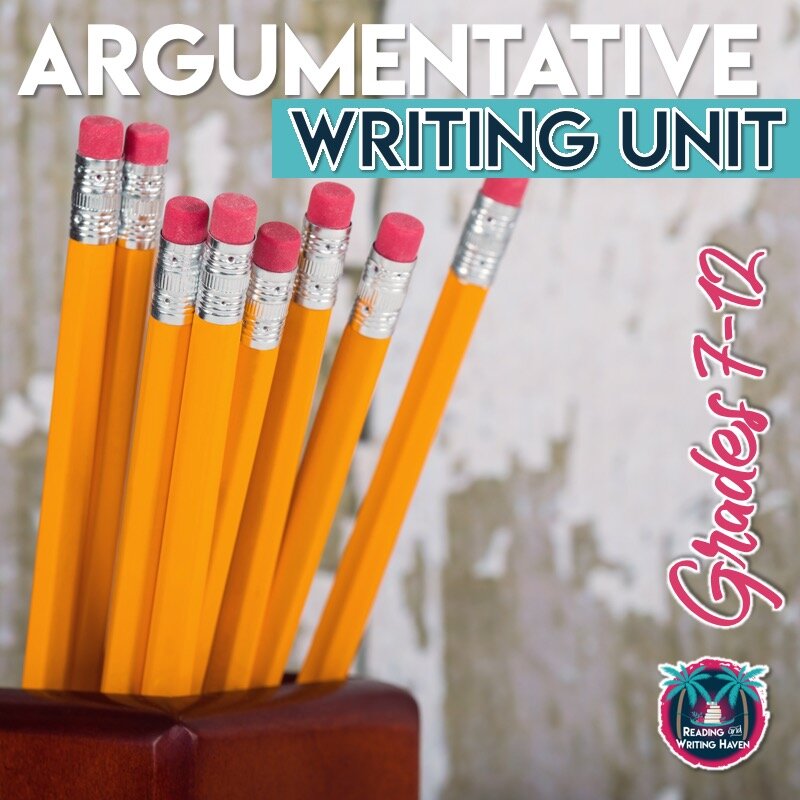14 Strategies to Support Struggling Writers: Build Confidence & Increase Success
Teaching and assessing writing can be challenging, and even more so when you're trying to identify effective ways to scaffold writing instruction for struggling students. Set teenagers up for success by incorporating these teacher-tested, student-approved strategies.
The stack was big. Huge. Overwhelming, actually. It sat on my desk, taunting me. I dare you to grade me, it whispered smugly.
You see, this was my first year teaching. I was fresh out of college. As is the case frequently, because I was the newbie, I was given the low-achieving, behavior-ridden, at-risk students. Honestly, I loved those kids, but I had no idea how to teach or assess their writing. As I slumped over my desk, staring at the pile of papers that threatened to take away my social life for the next two months, I felt tears creep into my eyes. These kids couldn't even spell simple words. Their essays were huge paragraphs that spanned multiple pages, yet there wasn't a period in sight. That was the moment I knew I needed a different strategy.
If you've ever taught writing to a group of struggling pupils, you can identify with the sense of helplessness you feel as a teacher who wants to catch them up on all they have missed, but they're so far behind you have nowhere to start. For the last ten years, I've taught students who were years behind grade level -- ninth graders who wrote like elementary students, who couldn't hear the awkwardness of a poorly constructed sentence, who misspelled their, they're, and there like it was their job.
As teachers, we learn to adapt to our students' needs. Struggling writers are just as frustrated with the task of writing as we are with trying to assess their work. I've learned that students who have low self-confidence benefit from scaffolding and differentiation. Whether you teach students who fall into this category year round or just during summer school, these strategies might help you to scaffold your instruction, thereby increasing their engagement and chances of success.
1. Begin by gathering data.
Every year, I start my first writing unit with a pre-assessment. In order to cater my instruction to the group's basic needs, I have to know where to start. The pre-assessment provides the data I need. While many people use multiple choice formats, I find those ineffective. If I'm assessing a student's writing ability, I need to see a sample of their writing. The genre of writing for the pre-assessment should be determined by the type of writing you expect students to practice in class.
2. Build confidence.
So many struggling writers walk through our doors with negative preconceptions about their abilities and futures as authors. They live up to the minimal goals they have developed and own the pessimistic self-images projected both by themselves and others. In order to build up students' confidence, I take the information I glean from their pre-assessments, and I begin with simple writing tasks I know they can tackle. For instance, when given a debatable topic, most students are capable of writing their opinion on said topic. With each skill my students complete successfully, they slowly begin to develop a more positive image of themselves and their abilities.
3. Develop a logical instructional sequence.
By introducing individual writing skills one at a time and slowly building upon each one, students will be less overwhelmed when you ask them to write an essay. As a high school English teacher, I've noticed that when I begin with grammar instruction regarding parts of sentences (subjects, verbs, etc.), phrases and clauses, and types of sentences, I can then speak to my students in a more intelligent manner regarding the use of complete sentences in their writing. I teach them to identify fragments and run-ons at the beginning of the year, and they are well-versed at identifying the misuse of a semi-colon by October. As students gain confidence with each learning target, I add in a new writing skill (for instance, the use of mature transitions, how to support opinions with research, and so on).
4. Reduce overwhelming choices.
I'm not a creativity or interest squelcher. To the contrary, I firmly believe students will be more receptive to writing if we allow them to write about what matters to them. Still, I've taught remedial writing classes long enough to understand that when struggling writers are given too much freedom, many of them become paralyzed. For this reason, I've always found it beneficial to scaffold writing instruction by offering students a list of topics (for which I know they can easily find research), to develop possible thesis statements together as a class, and even to offer students the option to use sources I've already gathered for them.
5. Read & Write Frequently.
When learning a new language, immersion is crucial. If you surround yourself with the new language, you will learn it exponentially faster. The same is true with writing. For some students, composition is so difficult for them that it's similar to the learning curve of adopting a new language. In order to provide our students with optimal opportunities for success, they need to write frequently (every day, ideally). Because reading and writing are the perfect literacy companions, struggling writers will also benefit from reading every day. Marrying reading and writing together in your daily routine will reap bigger gains.
6. Minimize assignment lengths.
So often, teachers beat themselves up if their students cannot write an intelligent multiple paragraph essay by the end of the year. In truth, much of students' ability to do so is determined by influencing factors that occur before we ever meet them. I've learned to lighten up, and we all should. Quality trumps quantity. With my struggling writers, I celebrate success when we write a single paragraph eloquently. Besides, when teachers assign three-page essays to a group of at-risk students, those students often immediately decide not to complete the assignment. It will be "too hard," "too frustrating," "too time-consuming," "too boring," or downright "impossible." A paragraph, on the other hand? That's do-able.
7. Offer various prewriting options.
Whether it's a graphic organizer, an outline, note cards, a mind-map, or something else, students benefit from pre-writing. I model how to use both a graphic organizer and an outline with my students so as not to pigeon-hole them into one mandatory strategy. Regardless of the approach, pre-writing is essential to help students organize their thoughts before drafting.
8. Write together as a class.
Struggling writers benefit largely when teachers model the drafting process. In my classroom, here's what that looks like. I sit at my computer, and I ask probing questions, like: "How should we begin? What do you call the first sentence of an argumentative paragraph? How should we word our standpoint?" From there, I write down whatever students volunteer without offering any alternate suggestions.
After the sentence is written, I ask the class to reflect on it as I read it aloud. "Is everyone happy with what we have so far? How can we make this stronger? Does it include a clear argument that can be defended logically?" Almost always, students share opinions for how we can improve upon the existing content, and they are engaged. They enjoy the collaborative writing activity. Why? They can sit back and analyze what's on the board without pressure. They benefit from hearing their peers' opinions. They don't feel like failures because even though they are writing the paragraph, we are improving it together.
10. Use Guided Practice strategically.
After completing a couple class-developed paragraphs, we move into guided practice. What I've found to be most effective is to allow students to work with a partner. Working as a pair, they read an article. Afterward, they discuss its debatable issues. Finally, I give them a worksheet I have created that already contains the topic sentence (which I also call the thesis statement for a single paragraph) and the supporting arguments. However, I leave blanks for students to fill in details from research. They find textual evidence to support the existing structure, and they paraphrase, summarize, or directly quote it on their paper. For struggling high school writers, Scholastic's Scope magazine is an excellent resource.
11. Revise together.
I've noticed that if I show students how to revise by slapping example sentences up on the board and discussing common issues together as a class, they tend to produce a better final draft than if I simply make blanket statements and observations or if I tell them to revise and hand them a checklist. Conducting revision regarding repeated errors (incorrect citations and elementary transitions, for example) as a group is a valuable and memorable experience students tend to enjoy.
12. grade often via conferences.
Grade essays while students are writing them using a conference format to provide immediate feedback. Allow them to revise their early drafts without penalty if they can both show you and verbally explain to you what they learned from their revision process. Finally, consider giving students credit for improvement, not perfection.
13. Minimize target skills.
That first year of teaching, I made a lot of mistakes, one of which was that I didn't zero in on a specific skill when I assigned the essays. When teaching writing to a group of frustrated or struggling students, it's always a best-practice to focus on a specific group of skills rather than to use a rubric that demands mastery of all writing concepts at the same time. Had I asked students to write a paragraph which I would grade based on correct punctuation, the final product they submitted would have been more polished, and the grading experience would have been more enjoyable (not to mention quicker)!
14. Don't be afraid to admit you were wrong.
As a final thought, teachers are not perfect (regardless of our years of experience). We have to give ourselves a break, and it is important to students that we are human...they'd rather we admit our imperfections than try to hide them under the guise of their inadequacy. What did I do with that stack of essays? I handed them back (without grading any), and I explained to my kids that I had failed them. I hadn't properly prepared them to write the essay, and together, we had some work to do. I think they respected that admission. After all, if it's okay for a teacher to make mistakes, the classroom culture is one in which students are not afraid to take risks.
Spotlight Resource
Click on the image below to view the scaffolded argumentative writing unit I use with middle and high school students.
About the Author
Melissa is the creator of The Reading and Writing Haven and a collaborative blogger on Teachwriting.org.
An English teacher for over a decade, Melissa is an avid reader and writer, and she loves sharing ideas and collaborating with fellow educators. Melissa use her degrees in English and Curriculum & Instruction as well as her Reading Specialist certification to ponder today’s educational issues while developing resources to help teachers, students, and parents make learning more relevant, meaningful, and engaging.
When she's not teaching, Melissa lives for drinking a good cup of coffee, loving on her family, working out, and contemplating the structure of a sentence as well as how she can lead her students to deeper reading comprehension (Melissa's true nerdy passion
Let's Connect!
Related Articles from
The Reading & Writing Haven:
How to Design an Effective Summer School Curriculum
3 Successful Ingredients for Successful Writing Instruction and Assessment






